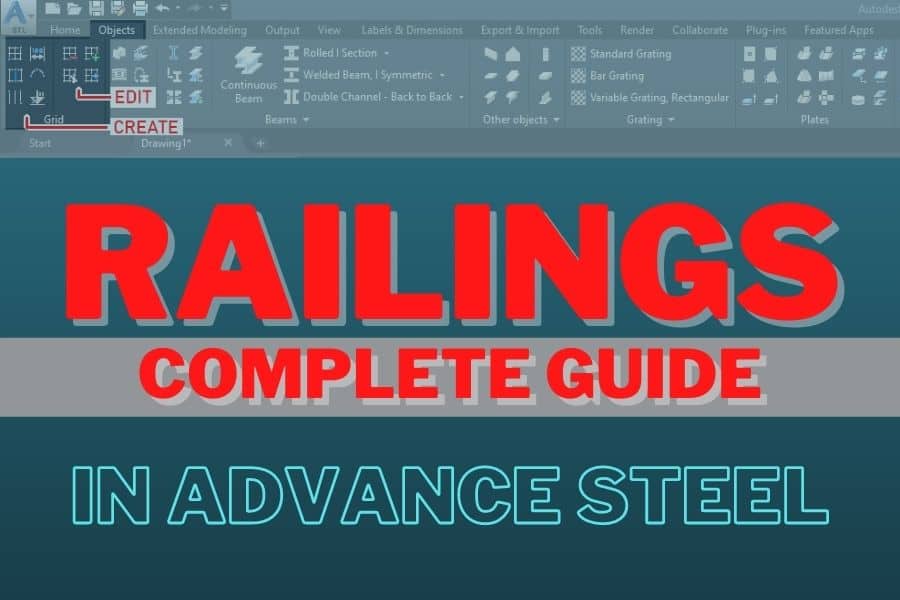The railings in Advance Steel are not part of the stairs – railings are separate entities. It is the correct approach because, very often, you need to just create the stairs without railings. In Advance Steel, you can create various types of handrails, railing ends, etc. You can define post connections as welded or bolted. For each side, you can create a different type of railing.
Table of Contents
Save this pin to your Pinterest Advance Steel Board:
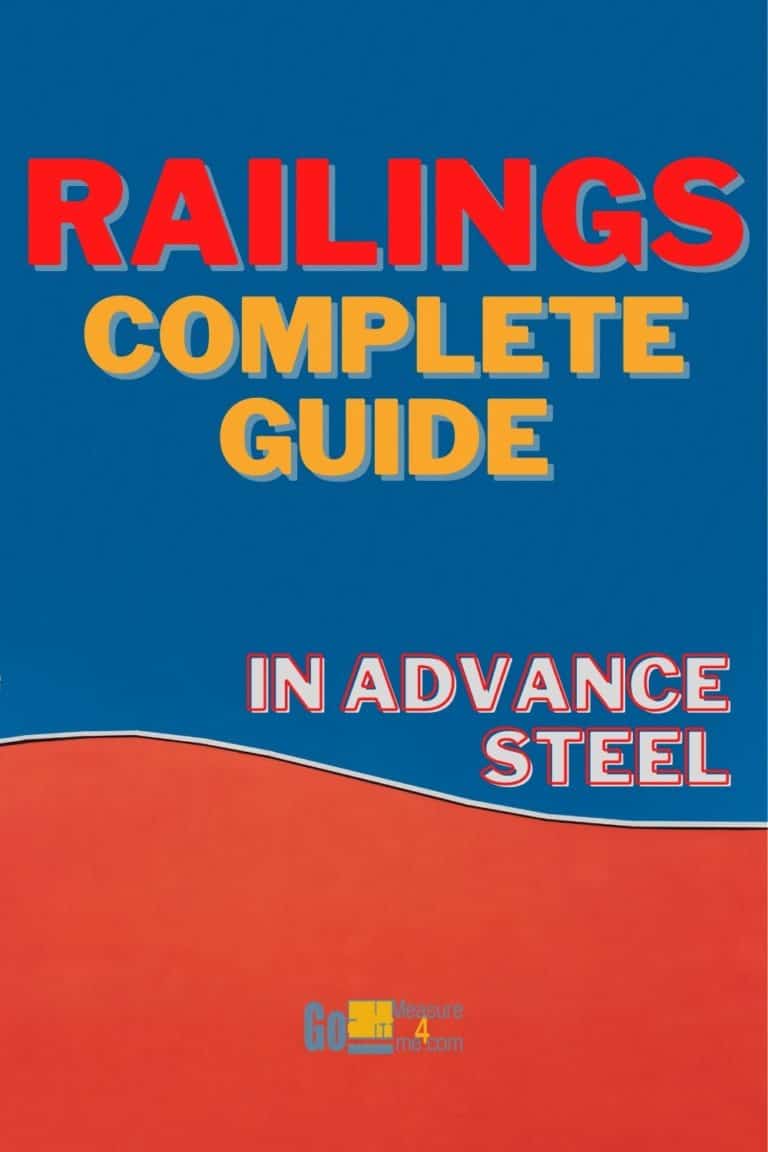
Accessing The Hand-Railing Tool
You can access the Railing Tool from the Home or Extended Modeling ribbon tab.
Accessing from Home Ribbon Tab
Home tab > Extended Modeling panel > Hand-Railing

Accessing from Extended Modeling Ribbon Tab
Extended Modeling tab > Structural Elements panel > Hand-Railing

Using the Hand-Railing Tool
When you activate the Hand-Railing tool, you will be asked to select base beams for the railing, and you’ll need to specify where all the beams and posts are to be connected. Once you are done selecting these elements, hit ENTER. Next, you will be asked to identify the start and end points of the railing. Once you are done selecting these points, the prompt will be displayed:
Do you want to select a nosing point relative to the start point? [Yes/No] <N>:
Now you can respond either by typing Y to select a nosing point or press ENTER to accept the default response: No.
The railing will then be created:
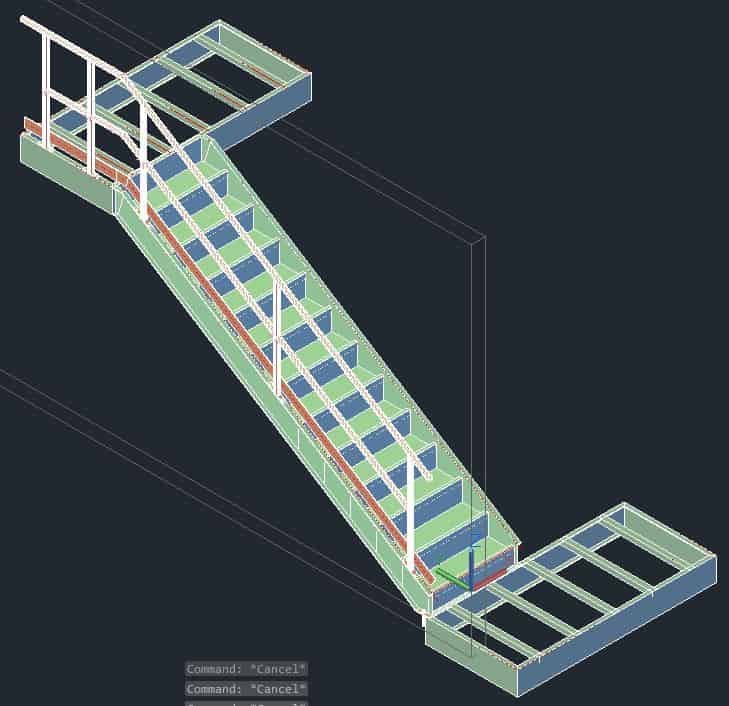
And the dialog box will open, where you can tweak the railing options:

Posts Category > Post tab
Specify posts parameters here:

Section
Specify the desired section of the posts.
Post Alignment
Specify how the post should aligned with the beam – by default, Top is selected. You can also define Left and Right.
Post Alignment From Edge
Only available when creating the post aligned at the top – define the offset value from the edge of the beam.
Offset
Only available when creating the post alignment is set to Top and it is used to offset the posts from the center of the top face of the beam.
Rotate With
This option is only available if you select the rectangular or angular section for the post, and you can rotate the post.
Post Offset Along Rail Axis
Select the railing posts and then offset them along the rail axis. You can use the spinner to go to the post number that should be offset and enter the numerical values for the offset in the box.
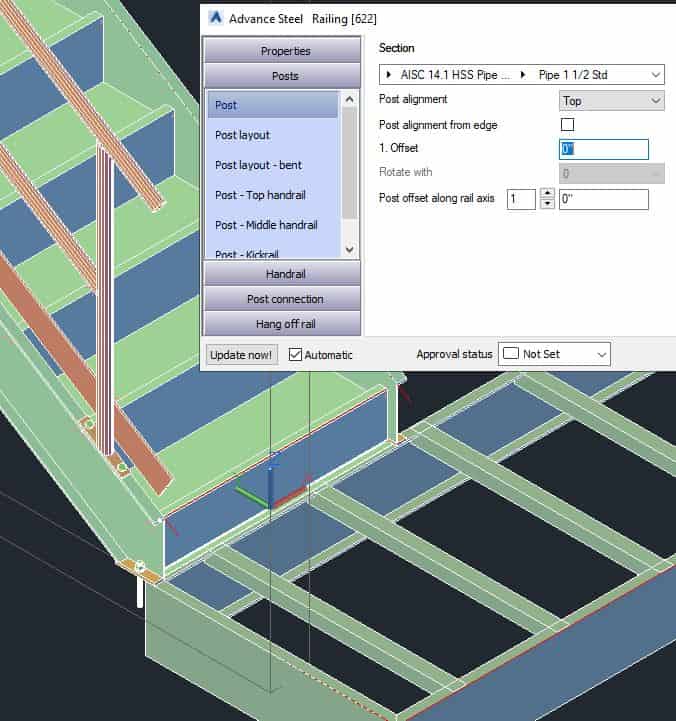

Posts Category > Post Layout tab
Define the post layout in this section:
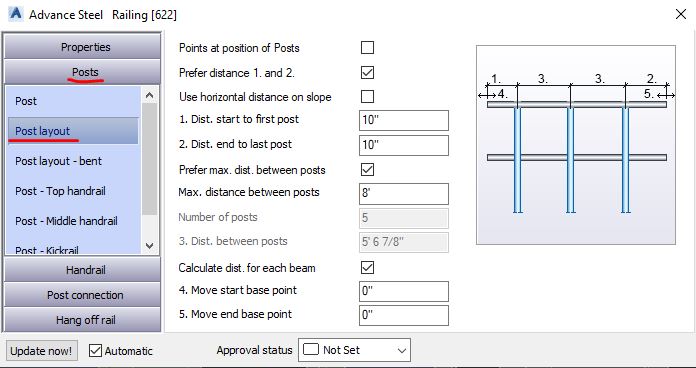
Points At Position Of Posts
When you select this box, your posts will be created at the start and end points that you defined while creating handrails.
Prefer Distance 1 And 2
Manually define the start distance to the first post and the end distance to the last post. These values are defined in the 1. Dist. Start to First Post and 2. Dist. End to Last Post boxes.
Use Horizontal Distance On Slope
The horizontal distance between the posts will be used to define the distance between the posts on the slope if this checkbox is selected.
Prefer Max. Distance Between Posts
Define the number of posts based on the maximum spacing between the posts. Enter your numerical value in the Max. Distance Between Posts.
Number Of Posts
Available only when you clear the Prefer Max. Distance Between Posts box. If this is true, enter the total number of posts in this box.
Distance Between Posts
Enter the spacing between posts.
Calculate Dist. For Each Beam
When you check this box, the number of posts is calculated individually for each beam selected while creating the railing.
Move Start Base Point
Define the distance by which you want to move the start point of the railing.
Move End Base Point
Define the distance by which you want to move the end point of the railing.
Posts Category > Post - Top/Middle Handrail And Kickrail tabs
Determine how the top handrail will be connected to the post. The options you can find in the Connection type lists are available in these tabs. Select the connection type from these lists and then enter the values in the other options that appear in these tabs.

Handrail Category
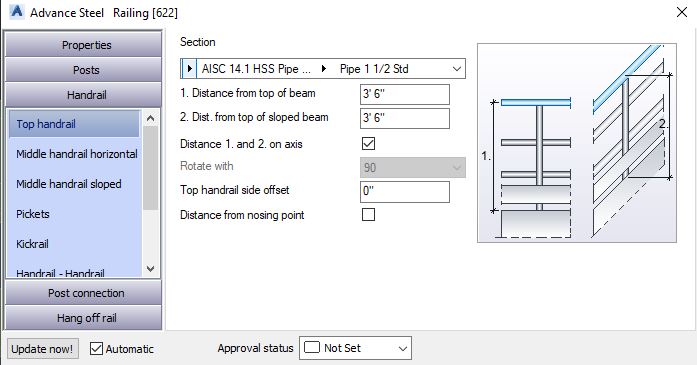
Handrail Category > Top Handrail Tab
Specify the section and distances of the Top Handrail. Also, a side offset is available if needed.
Handrail Category > Middle Handrail Horizontal Tab
Specify the section and distances of the middle handrail. Also, create more than one middle rail if needed and specify the distance between middle handrails.
Handrail Category > Middle Handrail Sloped Tab
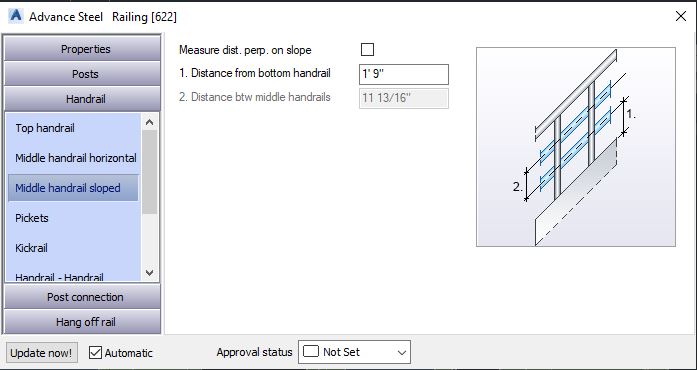
Specify the middle handrail distances on the sloped beams. By default, the distance from the bottom handrail is measured in the vertical direction, but you can change it to the Measure Dist. Perp. to Slope.
Handrail Category > Pickets Tab
Specify the section and spacing between the pickets:
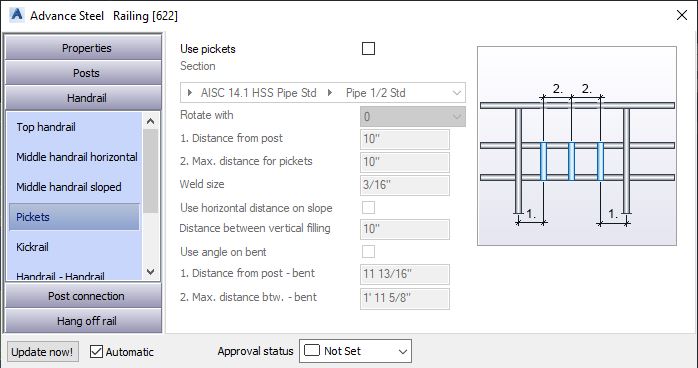
By default, the pickets are not created. To generate pickets, select the Use Pickets checkbox and specify the section and required distances:
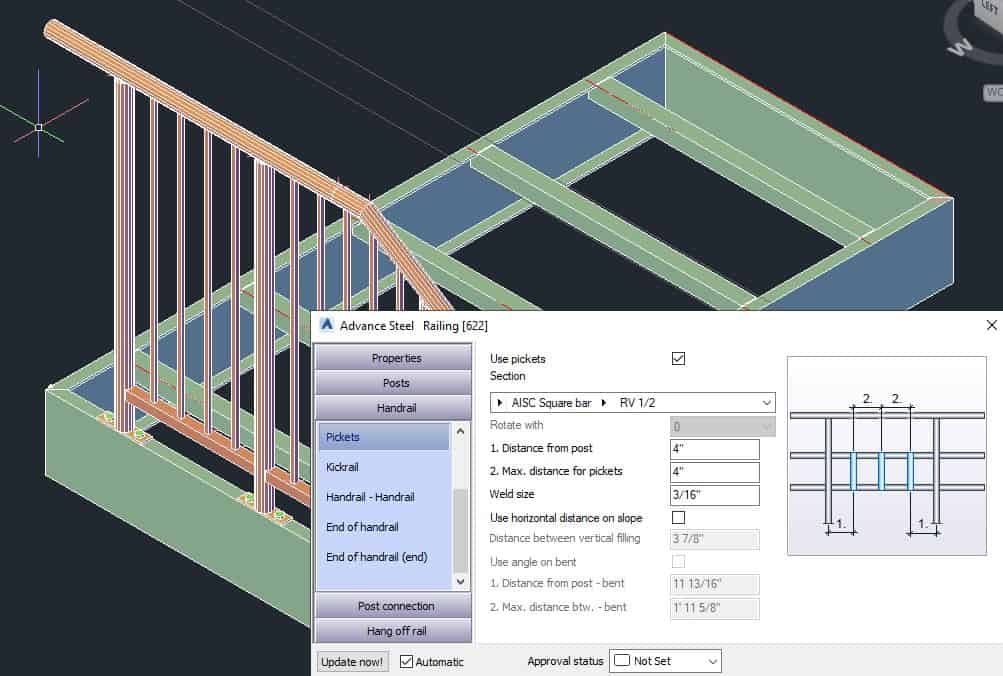
Handrail Category > Kickrail Tab
If you wish, you can specify all the details of the kick rail in this tab. To turn it on, select the checkbox: Use Kick Rail. Use the alignment menu to specify if you wish to insert a kick rail on the left or the right side of the posts.
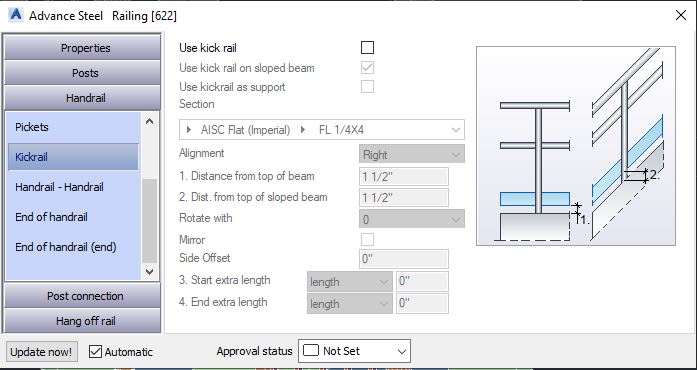
Handrail Category > Handrail - Handrail Tab

Specify the connection between the various handrail segments. By default, Miter Cut is selected, but you can select Knee instead.


Handrail Category > End Of Handrail / End Of Handrails (end) Tab

Specify the end connection type of the handrails at the start and end of the handrail sections. You can select the connection type from the connection type drop-down. Specify the details for each connection. If you select Same Joint for Both Ends, it will ensure that the same connection is applied at both ends of the railing.
Available Handrail End Options:

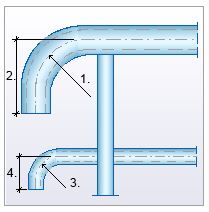
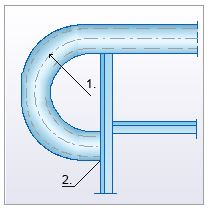
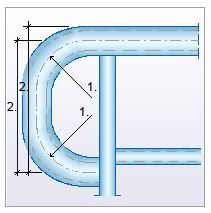
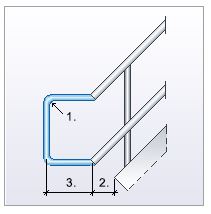
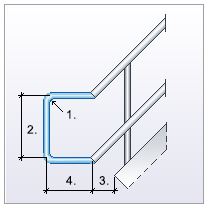
Post Connection Category
Define the connection of the post to the beam and all the parameters of the connection.
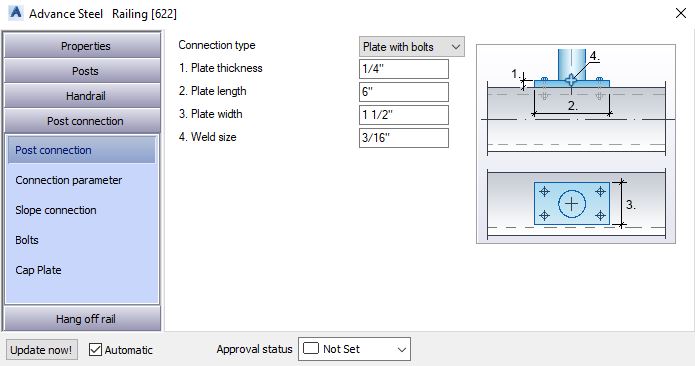
Hang Off Rail Category
Create Grab Rail and specify: section, connection and position.
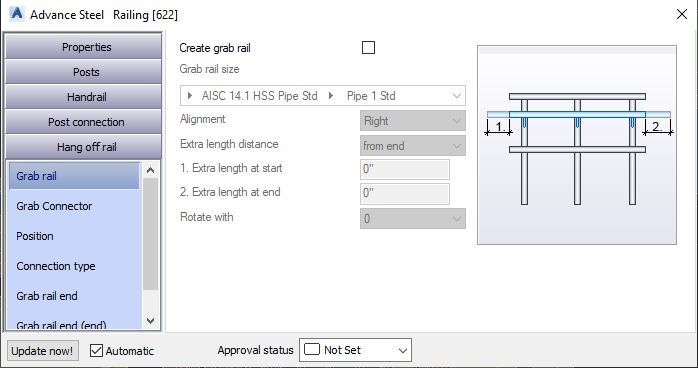
This concludes the Hand-Railing in Advance Steel Tutorial. Good luck using all the methods and tools described above. If you find this article valuable, please subscribe to my blog to be notified when I publish a new article.
If you are interested in upgrading your hardware or software, make sure to check out My Toolbox article, where I share information about the tools I use and special discounts you can use as well.
If you are into Advance Steel –

